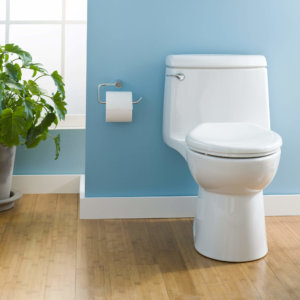Think Like a Sink: What to Know About Installing a Kitchen Sink
Updating your kitchen and bathrooms are the quickest way to increase your home’s value and avoiding contractors costs is the cheapest way to do it.
Yet, if you’re planning to DIY your domain, there are a few things you need to know.
Let’s start with the basics of installing a kitchen sink.
1. Choose Your Sink
We have kitchen sinks in every shape and size to suit the design you desire. Bear in mind that functionality is key when it comes to making your decision.
Choose your faucet and other attachments a the same time as your new kitchen sink. This way you can make sure they match up and the sink has enough holes for all the accessories you want.
2. Tools You Need for Installing a Kitchen Sink
Once you’ve bought your sink, get everything you need together before you start.
You’ll need a 4-in-1 screwdriver, an adjustable wrench, caulk gun, cordless drill, hacksaw, jigsaw, pipe wrench, putty knife, slip joint pliers and a soldering torch.
Buckets, plumbers tape, a flashlight, rags, a utility knife, and safety glasses will also come in handy.
If your sink is heavy, ask someone to help you with the holding and lifting parts of the job.
3. Mark out the Location of the Kitchen Sink
Most new sinks come with a template to help you get the perfect fit when placing them on a counter.
Put the template on top of the counter, about 1.5 to 4 inches from the front. Secure it with tape and draw around the template with a marker.
Screw a piece of wood across the middle of your outline so that it protrudes a little over the edges. This will stop your cut out from falling through.
Drill into the corners of your shape with a 3/8-inch-diameter drill bit and cut out the shape using a jigsaw. You can lift it out of the space using the wooden strip.
4. Install the Faucet
It is much easier to set the faucet in place before you insert the sink into your counter top.
Unless you are a confident handyman, it’s even easier and better to get a plumber to do this complex task for you. See what’s involved in installing a faucet here.
5. Put the Sink in Place
Rest the sink upside down on your counter top and squeeze a layer of silicone caulk all the way around on the underside of the sink’s lip.
Carefully flip your sink over and press it into place. Secure the underside with the mounting clips that came with your sink.
If some of the caulk squeezes out from under the lip of the sink, wipe it off before it dries.
6. Finishing Up
To connect the P-trap, join the faucet lines to the water supply and connect the strainers to the waste line.
Turn the water on, remove the strainer and flush the system with cold water for a few minutes. Remember to replace the aerator afterward.
Need Help?
Learning how to install a new kitchen sink, is only a small part of the DIY enjoyments you’ll get while working on your perfect kitchen. Keep reading our blog for more tips or get in touch for assistance.
You’ll find everything you need for installing a kitchen sink available on our website.


